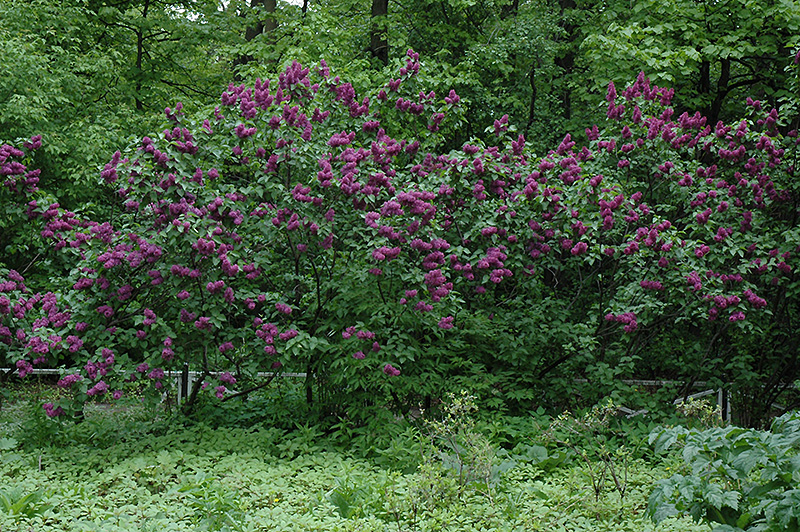Hey there, fellow garden enthusiasts! I’ve been absolutely obsessed with the Charles Joly Lilac lately, and I just had to share everything I’ve learned about this gorgeous French heirloom variety Whether you’re a newbie gardener or a seasoned pro, this guide will help you understand all about its growth rate and care requirements
Quick Facts About Charles Joly Lilac
- Botanical Name: Syringa vulgaris ‘Charles Joly’
- Mature Height: 10-12 feet
- Mature Width: 8-10 feet
- Growth Rate: Medium (1-2 feet per year)
- USDA Zones: 3-7
- Sun Requirements: Full to partial sun
- Water Needs: Moderate
Understanding the Growth Rate
Let me tell ya something interesting – the Charles Joly Lilac is what we call a medium grower. In perfect conditions, these beauties will shoot up about 1-2 feet each year. Pretty decent right? I mean, you won’t have to wait forever to see results but it’s not gonna turn into Jack’s beanstalk overnight either!
Factors Affecting Growth Rate
-
Soil Conditions
- Well-draining soil
- Adapts well to alkaline soils
- Tolerates urban conditions
-
Sunlight
- Best growth in full sun
- Can handle partial sun
- More sun = more blooms!
-
Water Requirements
- Moderate water needs
- Don’t overwater
- Consistent moisture during growing season
Size and Development Timeline
Here’s what you can expect year by year:
| Year | Approximate Height | Stage |
|---|---|---|
| 1 | 2-3 feet | Establishment |
| 3 | 5-6 feet | Early maturity |
| 5 | 7-8 feet | Mid maturity |
| 7+ | 10-12 feet | Full maturity |
Amazing Features That Make It Worth the Wait
Lemme tell you why I’m so excited about this lilac
- Those Gorgeous Blooms: We’re talking about massive 8-inch flower clusters in a stunning royal purple shade
- Double Flowers: Unlike regular lilacs, these babies are packed with double blooms
- That Sweet Fragrance: OMG, the classic lilac scent is to die for!
- Long Bloom Time: These beauties keep flowering for about a month
- Cold Hardy: Can handle super cold temps (even zone 2!)
Tips for Optimal Growth
Location, Location, Location!
Plant your Charles Joly where it’ll get:
- Full sun exposure
- Good air circulation
- Enough space to reach full size
- Protection from strong winds
Soil Preparation
- Well-draining soil is crucial
- Add organic matter if needed
- pH can be alkaline (they actually like it!)
Maintenance Schedule
Spring
- Remove dead or damaged branches
- Apply balanced fertilizer
- Check for any winter damage
Summer
- Deadhead spent blooms
- Water during dry spells
- Monitor for pests
Fall
- Clean up fallen leaves
- Reduce watering
- No pruning needed
Winter
- Apply mulch for protection
- No other maintenance needed
Common Growth Issues and Solutions
Sometimes things don’t go as planned. Here’s what to watch for:
-
Slow Growth
- Cause: Insufficient sunlight
- Solution: Relocate to sunnier spot
-
Sparse Blooming
- Cause: Improper pruning timing
- Solution: Only prune right after flowering
-
Yellowing Leaves
- Cause: Over-watering
- Solution: Improve drainage
When to Expect Results
Look, I’m gonna be honest with ya – growing Charles Joly Lilac isn’t like growing annual flowers. You gotta have some patience! But trust me, it’s worth it. Here’s what you can typically expect:
- Year 1: Focus on root establishment
- Year 2: Some growth and maybe a few blooms
- Year 3: More substantial blooming
- Years 4+: Full flowering potential
Final Thoughts
I’ve gotta say, even tho the Charles Joly Lilac isn’t the fastest growing shrub out there, its medium growth rate of 1-2 feet per year is actually perfect for most gardens. It gives you time to shape it properly while still providing reasonable progress each season.
The Tree Center offers these beautiful plants in various sizes, from #2 to #5 gallon containers, so you can choose your starting point based on your patience level and budget. Whether you’re planning to use it as a stunning focal point or as part of a privacy screen, just remember – good things come to those who wait!
Remember to grab that pruning shear after flowering and show your lilac some love. With proper care, you’ll have a gorgeous, fragrant showstopper that’ll make your neighbors green with envy!
Would you like me to explain anything in more detail? Drop me a comment below – I’d love to help you out with your Charles Joly Lilac journey!

NOTIFY ME WHEN AVAILABLE
Well notify you when this product is back in stock. Email Address
Please enter valid email!
You will receive a notification once this product is back in stock
Be the first to ask a question about this.
Charles Joly Lilac Training to standard (part 1 of 5) #charlesjolylilac
FAQ
How quickly does a lilac grow?
Average growth rate for lilacs is moderate, 1 to 2 feet per year. Dwarf varieties may grow more slowly.
What’s the fastest growing lilac?
Villosa Lilac grows quickly and is drought resistant, making it suitable for the outer row of a shelterbelt. Its roots are non-suckering and it does not compete with nearby crops.
What are the downsides of lilac bushes?
Common lilacs (Syringa vulgaris) are long-lived plants. Lilacs are susceptible to fungal leaf diseases, most of which cause only cosmetic damage to leaves. The severity of leaf spot diseases can be reduced by proper care (pruning, mulching, watering) and sanitation (cleaning up fallen leaves).
What is the growth rate of a lilac bush?
Syringa vulgaris, or Lilac, is native to Southeast Europe and probably has been cultivated since the mid-1500’s. It’s not native to Kansas. In Kansas it grows to a height of 8 to 12 feet with a spread of 6 to 10 feet. Once established, it grows at about 12 to 18 inches per year with a slow to moderate growth rate.
